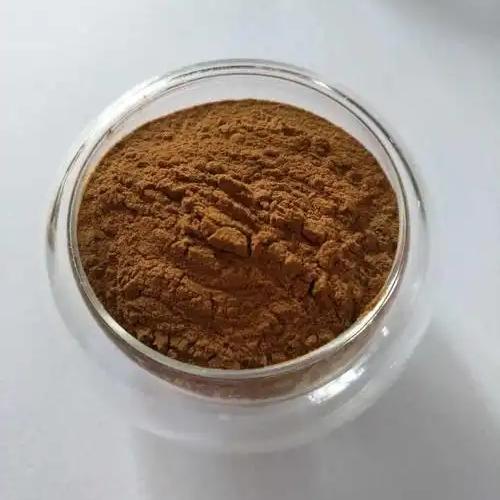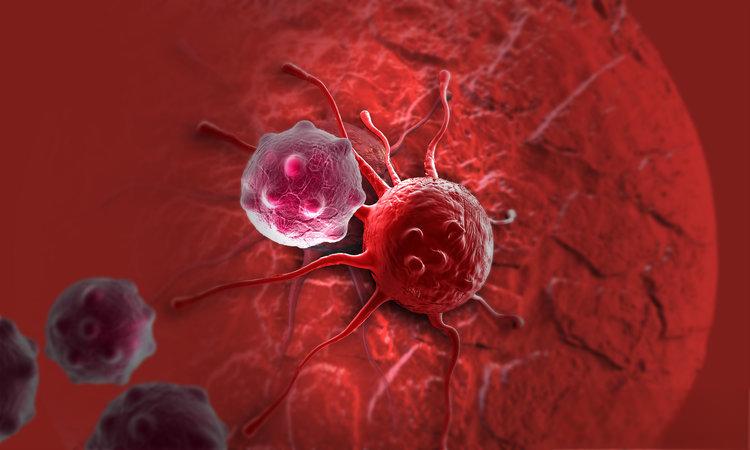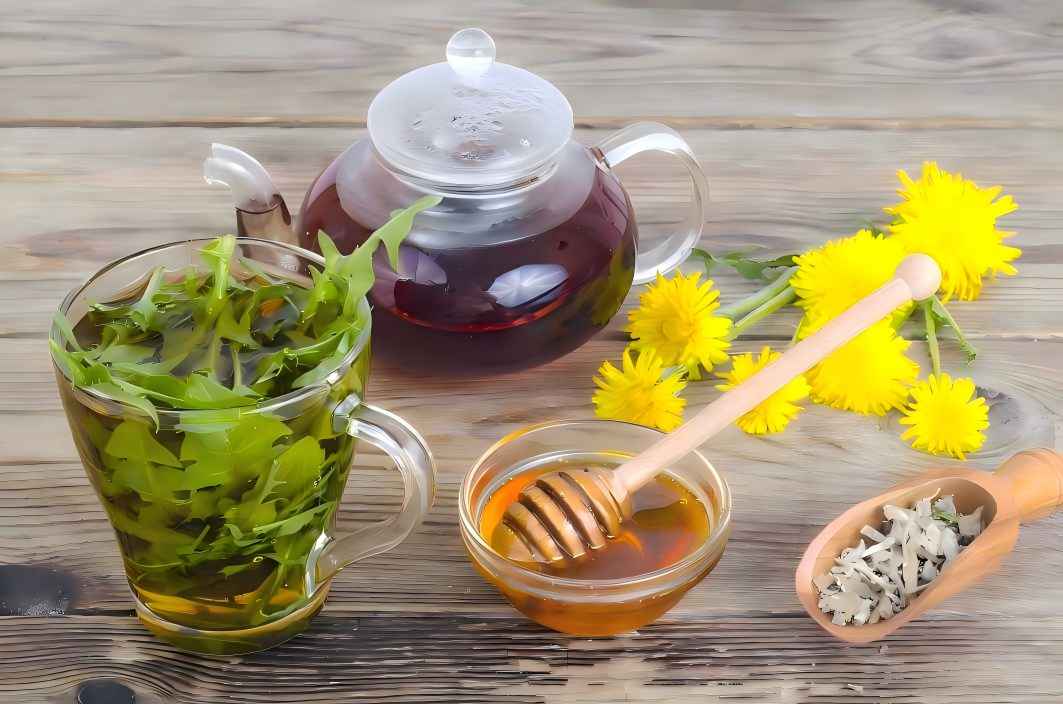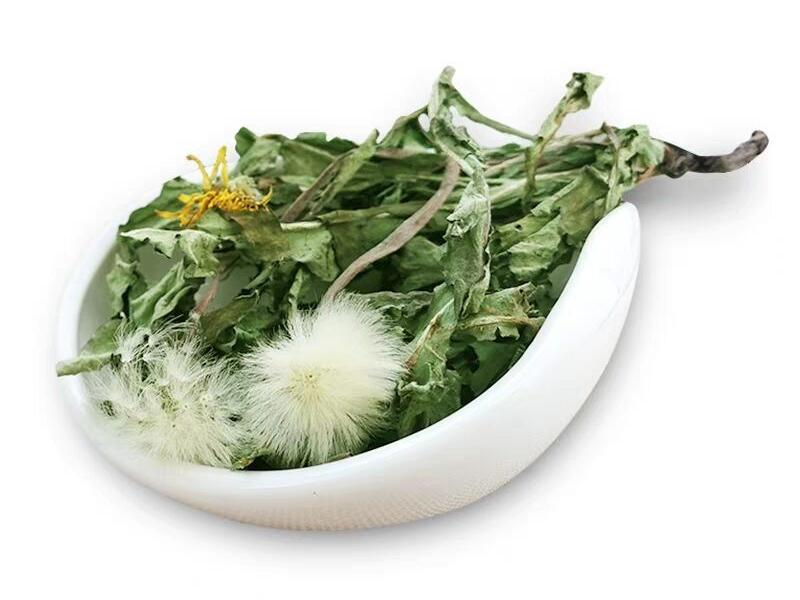What Is the Health Benefit of Dandelion?
Dandelion is derived from the dried whole grass of various dandelions in the Asteraceae family. It is commonly known as yellow daylily, mother-in-law's cap, yellow Sanqi, etc., and is a perennial herb [1]. Dandelion was first recorded in the New Revised Materia Medica. It is bitter and sweet in taste, cold in nature, and enters the liver and stomach meridians. It has the effects of clearing away heat and toxins, inducing diuresis and resolving lumps. It is mainly used to treat red eyes, sore throat, hepatitis, gastritis, acute mastitis, lymphadenitis, cholecystitis, urinary tract infections, etc. [2].
Dandelion is also a medicinal herb with edible properties. As its use in medical treatment and healthcare increases, the market's demand for high-quality dandelion is also becoming more stringent. There is an urgent need to identify the active ingredients in dandelion and improve its quality standards. This paper integrates and sorts out research on the active ingredients and pharmacological effects of dandelion root. Based on the idea of quality markers, it predicts and analyzes the quality markers of dandelion medicinal materials, providing a reference for determining the quality markers of dandelion medicinal materials, establishing a quality control system, and product development and utilization.

1 Active ingredients
At present, research on the active ingredients of dandelion extracts has been quite thorough. Dandelion contains a variety of active ingredients, mainly flavonoids, phenolic acids, polysaccharides, terpenes, sterols, essential oils, alkaloids, etc., among which flavonoids, phenolic acids, and terpenes are the main active ingredients of dandelion.
1.1 Flavonoids
Dandelion extract contains about 1.35% total flavonoids, of which luteolin is the most abundant [2]. The main flavonoids that have been isolated and identified so far are luteolin and its glycosides, apigenin and its glycosides, quercetin and its glycosides, genistein and its glycosides, kaempferol, rutin, etc. [3-10]. For the names and molecular formulas of the reported flavonoids, see Table 1.
1.2 Phenolic acids and their derivatives
The total phenolic acid content in dandelion extract is about 120.5 mg/g [11], mainly including caffeic acid, monocaffeoyl tartaric acid, chlorogenic acid, ferulic acid, chicoric acid, phenylacetic acid, protocatechuic acid, p-coumaric acid, etc. [12-18]. For the names and molecular formulas of the reported phenolic acid compounds, see Table 2.
1.3 Terpenoids
The terpenoids contained in dandelion roots mainly include pentacyclic triterpenoids and sesquiterpenoids [19-22]. The names and molecular formulas of the reported terpenoids are detailed in Table 3.
1.4 Sterols
Sterol compounds have been isolated and identified in the pollen, roots and whole grass of dandelions, with the pollen containing more. Among the identified monomer sterols, sitosterol is the most abundant, followed by stigmasterol and campesterol [23]. The sterols in dandelion also include carotene, pollen sterols, isofucosterol and cyclomarin.
1.5 Other components
Dandelion is rich in polysaccharides, as well as pigments, alkaloids, fatty acids, essential oils and other chemical components [24-25]. Some scholars have also isolated and identified from dandelion Mongolian dandelionin A, Mongolian dandelionin B, eugenol, phenylethanol, vanillin, taraxacin and other compounds [26].
2 Pharmacological effects
2.1 Anti-inflammatory
Dandelion contains a variety of components with strong anti-inflammatory activity, which work through different mechanisms. Dandelion polysaccharides have good anti-inflammatory activity in vitro and can inhibit the mRNA expression of inflammatory factors tumor necrosis factor-alpha (TNF-α), interleukin-6 (IL-6) and interleukin-1β (IL-1β) [27]. The triterpenoids taraxerol and taraxasterol are also the main active ingredients in anti-inflammation. They can not only inhibit the production of inflammatory-related inducible enzymes and inflammatory mediators such as TNF-α and IL-6, but also exert anti-inflammatory effects by affecting the MAPK and NF-κB signal pathways [28-29]. Dandelion essential oil can treat tissue inflammation and injury and inhibit the release of the inflammatory factor NO [24]. The dandelion phenolic acid components chicoric acid, caffeic acid, and chlorogenic acid can all reduce the level of inflammatory factors in bronchial epithelial cells induced by lipopolysaccharides, with chicoric acid being the most active [30]. Network pharmacology research shows that the main active ingredients of dandelion that are used to treat parotitis, tonsillitis and pharyngitis in Dandelion Anti-inflammatory Oral Liquid, in addition to monocaffeoyl tartaric acid, chlorogenic acid and chicoric acid, also include the flavonoid luteolin and its glycoside [31].
2.2 Bacteriostatic
Dandelion extracts, decoctions, and leachates all have antibacterial activity, and the various active ingredients they contain have a significant inhibitory effect on cocci and bacilli [32]. Sun Jimei et al. [33] screened the antibacterial activity of dandelion decoction liquid externally by the micro broth dilution method, and confirmed that dandelion decoction liquid has an inhibitory effect on a variety of clinically common infectious bacteria, especially gram-positive cocci. The fat-soluble components of dandelion play a bacteriostatic role by destroying the cell membrane of Salmonella bacteria and causing their contents to leak out [34]. The phenolic acid component chlorogenic acid has a strong antibacterial effect as a metabolite of dihydrocaffeic acid after oral administration [35].
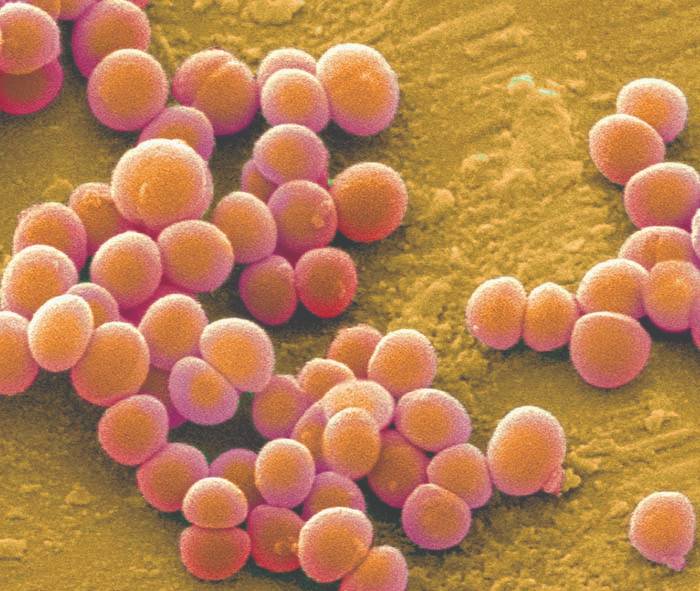
2.3 Antioxidant
The antioxidant mechanism of dandelion is mainly reflected in the removal of free radicals and reactive oxygen species. Chlorogenic acid, chicoric acid, caffeic acid and mono-caffeoyl-tartaric acid have multiple pharmacological activities, with outstanding anti-inflammatory and antioxidant effects [34-36]. Cichoric acid has strong antioxidant capacity, can remove free radicals, increase superoxide dismutase activity, and inhibit apoptosis and damage [37-39]. The phenolic acids contained in dandelion and chicory stems are similar in type. Meng Chuangge et al. [40] analyzed the antioxidant activity of five phenolic acids contained in chicory stems and found that the scavenging effects on DPPH and ·OH radicals were: chicoric acid > luteolin > chlorogenic acid > caffeic acid > mono-caffeoyl-L-tartaric acid; the optimal ratio of chlorogenic acid or luteolin to chicoric acid for synergistic antioxidant action was 1.5:1, and the synergistic effect of chlorogenic acid was weaker than that of luteolin. Luteolin can accelerate the removal efficiency of reactive oxygen species by affecting the autophagy process, reduce the production of reactive oxygen species, and exert a protective effect against oxidative stress damage after cerebral ischemia-reperfusion [41].
2.4 Antitumor
Polysaccharides and flavonoids in dandelion root have antitumor activity [42]. Dandelion water extract can inhibit tumor cell proliferation in tumor-bearing nude mice by down-regulating Survivin expression [43]; it can regulate transforming growth factor-β (TGF-β), mammalian target of rapamycin (mTOR), MMP-2 and gastric cancer model mice tumor tissue transforming growth factor-β (TGF-β), mammalian target of rapamycin (mTOR), MMP-2 and MMP-9 expression, inhibit tumor cell invasion and metastasis, exerting anti-tumor activity [44]. Dandelion medicinal serum can significantly inhibit the proliferation and movement of SMMC-7721 liver cancer cells [45]. Fifteen components identified from the phenolic acids or flavonoids of Taraxacum officinale can specifically bind to the target cell membrane of Hela or MK-1 or enter the target cells, and are potential active ingredients that exert anticancer effects [46]. Studies on dandelion metabolites have found that luteolin can block the cell cycle of breast cancer cells [47], and has varying degrees of therapeutic effect on a variety of malignant tumors [48-49].
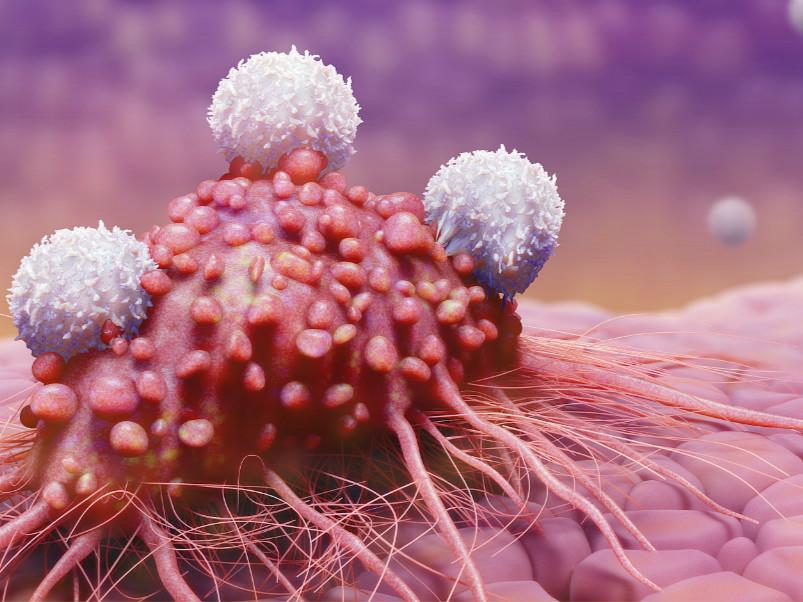
2.5 Other effects
Existing studies have shown that dandelion root also has significant effects in lowering blood sugar [50-52], lowering blood lipids [53], anti-thrombosis, protecting the liver and gallbladder [54], and diuresis.
3 Analysis of quality markers
Traditional Chinese medicine (TCM) is an important means of treating diseases in traditional Chinese medicine, and the quality of TCM has been a focus of attention in the industry for many years. In recent years, with the gradual implementation of the national strategy to revitalize the cause of traditional Chinese medicine, the development of traditional Chinese medicine in China has entered a golden age. At the same time, the issue of internationally recognized quality control standards for traditional Chinese medicine has arisen. In 2016, Academician Liu Changxiao proposed a new concept of “quality markers” for traditional Chinese medicine, advocating a closer correlation between the effectiveness of traditional Chinese medicine, its material basis, and the quality control of signature components, to construct a quality control thinking model for traditional Chinese medicine [55], which has attracted the attention of many scholars in the industry and is widely used and promoted in the fields of traditional Chinese medicine and Chinese patent medicine. This paper selects quality markers for dandelion based on this concept.
3.1 Predictive analysis of quality markers based on the source plant
Dandelion is derived from the genus Taraxacum F.H. Wigg. of the Asteraceae family. There are about 2,000 species of Taraxacum plants worldwide, concentrated in the subtropical to temperate regions of the northern hemisphere. There are about 71 species in China, mainly distributed in the eastern, northwestern and southwestern provinces. The genus Taraxacum is divided into 16 groups, each of which is found in China. Among the various components identified in Taraxacum plants, flavonoids, phenolic acids, and terpene compounds are recognized as the main active ingredients [6, 56]. These types of components can be used as reference substances for screening quality markers for dandelions.
3.2 Quality marker prediction analysis based on traditional medicinal properties and traditional efficacy
Flavor and meridian are the basic attributes of traditional Chinese medicine. Traditional efficacy is a generalization of the effectiveness of traditional Chinese medicine, and both are important bases for clinical medication and prescription. Dandelion is bitter, sweet, cold in nature, and enters the liver and stomach meridians. Chang Xuehui et al. [57] believe that sweet-tasting medicines mostly contain components such as glycosides and sugars, which correspond to the polysaccharides and flavonoid glycosides in dandelion.
Yan Yongqing et al. [58] studied the chemical composition of 460 commonly used bitter Chinese herbs and found that bitter herbs mostly contain alkaloids, terpenoids, etc., which correspond to the alkaloids, triterpenoids, and other components in dandelion. In the 2020 edition of the Chinese Pharmacopoeia, dandelion is included for its efficacy in clearing away heat and toxins, reducing swelling and dispersing lumps, diuresis and treating strangury, and is used to treat diseases such as carbuncle, breast abscess, intestinal abscess, damp-heat jaundice, and painful strangury due to heat [59]. The phenolic acids, flavonoids and terpenoids in dandelion root have anti-inflammatory, antibacterial, antioxidant and anti-tumor effects, which are consistent with its traditional efficacy. Therefore, phenolic acids, flavonoids and terpenoids can be used as important references for screening quality markers in dandelion.
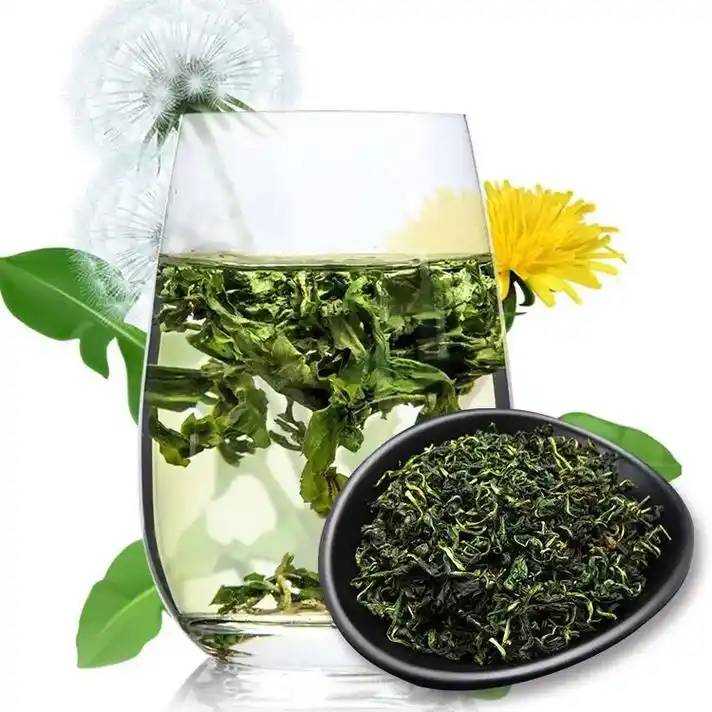
3.3 Predictive analysis of quality markers based on clinical efficacy and the effectiveness of ingredients
Dandelion has a diverse chemical composition and significant pharmacological effects. Modern medicine, modern chemistry, pharmacology and other research fields have elucidated the relationship between chemical composition and clinical treatment. Studies have shown that chlorogenic acid, chicoric acid, caffeic acid, monocaffeoyl tartaric acid, luteolin, and luteolin have multiple pharmacological activities, with prominent anti-inflammatory and antioxidant effects [34-37, 60]. Phenolic acid components chlorogenic acid and caffeic acid and some of their metabolites in the body have antibacterial activity [61]. Luteolin, dandelion sterol acetate, dandelion terpene alcohol, lupin alcohol, and caffeic acid have certain anticancer activities [43-44]. Dandelion polysaccharides, phenolic acids, and triterpenoids have anti-inflammatory, antibacterial, and antioxidant activities, while flavonoids have anti-tumor activities. They are often used in clinical practice to treat diseases such as acute mastitis, tonsillitis, gastritis, and alopecia due to spleen deficiency and damp-heat [62-63]. In summary, chlorogenic acid, monocaffeoyl tartaric acid, caffeic acid, chicoric acid, luteolin, and oleanolic acid can be used as reference indicators for the screening of dandelion quality markers.
3.4 Predictive analysis of pharmacokinetic-based quality markers
The biological activity of an active ingredient in the body largely depends on its absorption and metabolism. Dandelion contains phenolic acids such as chlorogenic acid, caffeic acid, and chicoric acid, which can be absorbed into the bloodstream in their original form. Chlorogenic acid is absorbed in the stomach, small intestine, and large intestine, and is absorbed into the bloodstream in its original form in the stomach and small intestine. The main metabolic pathway in the body is intestinal metabolism, and the metabolites are caffeic acid, quinic acid, etc. [34, 64]. Cichoric acid can quickly distribute to various tissues and organs after oral administration, and the main form of existence is mainly binding to tissue proteins. So far, a total of 7 metabolites, such as cichoric acid esterification and sulfation, have been detected [65-66].
The metabolic pathways of the flavonoid component luteolin in rats are oxidation, methylation, glucuronidation and sulfonation, while luteolin is hydrolyzed by intestinal bacterial hydrolytic enzymes and then undergoes further chemical reactions [67]. Zhang Xue [68] used high performance liquid chromatography to analyze the drug urine in the dandelion water extract, and found that there were 22 components and metabolites in dandelion that enter the blood. It was further determined that dandelion sterols and lupulinol are the active substances in dandelion extracts that inhibit the proliferation of MCF-7 breast cancer cells. In summary, it is predicted that chlorogenic acid, chicoric acid, luteolin, luteolin 7-O-glucoside, taraxerol and lupeol can be used as reference indicators for the screening of dandelion quality markers.
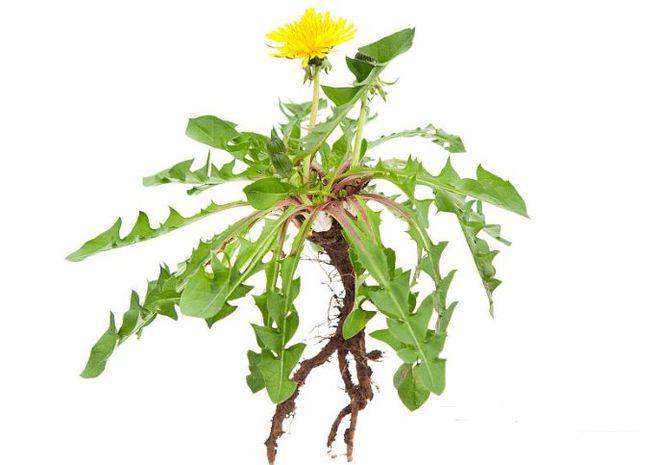
3.5 Predictive analysis of quality markers based on the detectability of components
The detectability of chemical components is also an important reference for the selection of quality markers. Liu Yan et al. [69] used HPLC to simultaneously determine the contents of monocaffeoyl tartaric acid, chlorogenic acid, caffeic acid and chicoric acid in dandelion, among which the contents of monocaffeoyl tartaric acid and chicoric acid were much higher than those of chlorogenic acid and caffeic acid. A study used ultra-high performance liquid chromatography tandem mass spectrometry to simultaneously determine the four index components of dandelion, namely, coumaric acid, caffeic acid, luteolin, and luteolin glucoside [70].
Liu Aipeng et al. [71] used high-performance liquid chromatography (HPLC) to determine the content of six components in dandelion, namely, monocaffeoyl tartaric acid, chlorogenic acid, caffeic acid, chicoric acid, isochlorogenic acid A, and luteolin. In the 2020 edition of the Chinese Pharmacopoeia, the index component under the assay of dandelion medicinal materials has been changed from caffeic acid in previous versions to chicoric acid, and the mass fraction must not be less than 0.45% [59]. Overall analysis shows that phenolic acid components are closely related to their medicinal effects, and that caffeoyl tartaric acid, chlorogenic acid, isochlorogenic acid A, chicoric acid, caffeic acid, quercetin, luteolin, and luteolin glucoside can all be quantitatively analyzed by chromatography and can be used as screening indicators for quality markers.
4 Conclusion
Dandelion root is one of China's traditional medicinal plants with a long history of use. It is a perennial herb with a wide variety of species and abundant natural resources, and has broad development prospects. In this paper, based on a summary of the chemical composition and pharmacological effects of dandelion, and guided by the theory of quality markers in traditional Chinese medicine, the quality markers of dandelion are predicted from the aspects of dandelion's affinity and component specificity, clinical efficacy and component effectiveness, the predictability of quality markers for dandelion, taking into account the predictability of quality markers for dandelion from the aspects of the kinship and component specificity of dandelion, clinical efficacy and component effectiveness,measurability of chemical components and pharmacokinetics. After comprehensive consideration, monocaffeoyl tartaric acid, chlorogenic acid, caffeic acid, chicoric acid, luteolin and luteolin glucoside were selected as the quality markers for dandelion medicinal materials, in order to facilitate the establishment of a reasonable quality control system for dandelion.
References
[1] Wu Yanling, Pu Huishan. Pharmacological research progress of dandelion [J]. Shizhen National Medicine National Medicine, 2004, 15(8): 519-520.
[2] Xie Shenyang, Yang Xiaoyuan, Ding Zhanggui, et al. Chemical composition and pharmacological effects of dandelion [J]. Natural Product Research and Development, 2012, 24(B12): 141-151.
[3] Ling Yun, Zhang Yonglin, Cai Shen, et al. Research on the chemical composition of dandelion in alkaline soil [J]. Chinese Journal of Traditional Chinese Medicine, 1998, 23 (4): 232.
[4] SHI Shuyun, ZHOU Changxin, XU Yan, et al. Research on the chemical composition of dandelion in Mongolia [J]. Chinese Journal of Traditional Chinese Medicine, 2008, 33 (10): 1147-1157.
[5] WILLIAMS C A, GOLDSTONE F, GREENHAM J. Flavo- noids, cinnamic acids and coumarins from the different tissues and medicinal preparations of Taraxacum officinale [J]. Phytochemistry, 1996, 42 (1): 121-127.
[6] YANG W Z, DU Y Z, GAO Y, et al. Research progress of dandelion total flavonoids [J]. Ginseng Research, 2017, 29(1): 52-55.
[7] SHI SH Y, ZHAO Y, ZHOU H H, et al. Identification of antioxidants from Taraxacum mongolicum by high-performance liquid chromatography-diode array detection-radical scavenging detection-electrospray ionization mass spectrometry and nuclear magnetic resonance experiments [J]. J of Chromatogr A, 2008, 1029(1-2): 145-152.
[8] Ling Yun, Zhang Yalin, Cai Shaoqing, et al. Research on flavonoids and sterols in dandelion [J]. Chinese Journal of Pharmaceutical Chemistry, 1998, 8(1): 46-48.
[9] Yao Wei, Lin Wenyan, Zhou Changxin, et al. Study on the chemical constituents of Mongolian dandelion [J]. Chinese Journal of Traditional Chinese Medicine, 2007, 32(10): 926-929.
[10] Xu Dan, Hou Fengfei, Wu Lijun, et al. Chemical research on dandelion [J]. Chinese Journal of Traditional Chinese Medicine, 2004, 29 (3): 278.
[11] Zhang Yan, Yu Zhengyong, Geng Funeng, et al. Optimization of the determination method for total phenolic acid content in dandelion extract [J]. Food Research and Development, 2018, 39 (3): 123-126.
[12] SHI Shuyun, ZHOU Honghao, ZHANG Yuping, et al. Chemical composition of Taraxacum officinale. Chinese Journal of Traditional Chinese Medicine, 2009, 34(8): 1002-1004.
[13] WIRNGO F E, LAMBERT M N, JEPPESEN P B. The physiological effects of dandelion (Taraxacum officinale) in type 2 diabetes[J]. Rev Diabet Stud, 2016, 13(2-3): 113-131.
[14] BODEN G. Role of fatty acids in the pathogenesis of insulin resistance and NIDDM[J]. Diabetes,1997,46(1): 3-10.
[15] Wang Yaru, Li Yaming, Yang Na, et al. Research progress on the chemical composition and pharmacological effects of Taraxacum plants. Specialty Research, 2017, 39(04): 67-75.
[16] Peng Deqian, Gao Juan, Guo Xiumei, et al. Study on the chemical constituents of dandelion root in Mongolia [J]. Chinese Patent Medicine, 2014, 36(7): 1462-1466.
[17] Zou Shihui. Research progress of bioactive substances in dandelion [J]. Heilongjiang Agricultural Science, 2019(8): 186-189.
[18] Nie WJ, Xu SS, Zhang YM. Research progress on the effective components and pharmacological effects of dandelion.
[19] SAEKI D, YAMADA T, IN Y, et al. Officinatrione: an unusual (17S)-17,18-seco-lupane skeleton, and four novel lupane-type triterpenoids from the roots of Taraxacum officinale [J]. Tetrahedron, 2013, 69 (5): 1583-1589.
[20] AGETA H, SHIOJIMA K, MASUDA K, et al. Composite constituents: four new triterpenoids, neolupenol, tarolu-penol and their acetates isolated from the roots of a Japanese dandelion, Taraxacum [J]. Tetrahedron Lett, 1981, 22(24): 2289-2290.
[21] SCHUTZ K, CARLE R, SCHIEBER A. Taraxacum: a review on its phytochemical and pharmacological profile [J]. J Ethnopharmacol, 2006, 107(3): 313-323.
[22] Jiang Xing, Zhao Min, Gao Xiaobo, et al. Chemical constituents of eudesmane-type sesquiterpenes in dandelion [J]. Zhongnan Pharmacy, 2016, 14(12): 1293-1297.
[23] Meng Zhiyun, Xu Suixu. Chemistry and pharmacology of dandelion [J]. Journal of Shenyang Pharmaceutical University, 1997, 14(2): 62-68.
[24] Jin Yanmei, Zhu Guojun. Study on the extraction process of total alkaloids in dandelion by orthogonal test method [J]. Jiangsu Agricultural Science, 2009, 37(3): 329-330.
[25] YANG Chao, YAN Qingzi, TANG Jie, et al. Analysis of the components of dandelion volatile oil and its anti-inflammatory and anti-tumor activities [J]. Chinese Journal of Traditional Chinese Medicine, 2018, 33(7): 3106-3111.
[26] AHMAD V U, YASMEEN S, ALI Z, et al. Taraxacin, a new guaianolide from Taraxacum wallichii [J]. J Nat Prod, 2000, 63(7): 1010.
[27] Xiao Chaoyong, Zhang Yu, Wang Yuliang. Extraction and purification of dandelion total polysaccharides and analysis of their anti-inflammatory activity in vitro [J]. Chinese Journal of Experimental Traditional Medicine, 2016, 22(11): 25-28.
[28] YAO X Y, LI G L, BAI Q, et al. Taraxerol inhibits LPS-induced inflammatory responses through suppression of TAK1 and Akt activation [J]. Int Immunopharmacol, 2013, 15(2): 316-324.
[29] ZHANG X M, XIONG H Z, LIU L B. Effects of taraxasterol on inflammatory responses in lipopolysaccharide-induced RAW 264.7 macrophages [J]. J Ethnopharmacol, 2012, 141(1): 206-211.
[30] Jiang Menghua, Li Chao, Zhu Fagen, et al. Identification of quality markers for anti-inflammatory activity in oral liquid of Pu-di-lan based on anti-inflammatory activity [J]. Chinese Journal of Traditional Chinese Medicine, 2020, 45(18): 4299-4306.
[31] Yang D, Jiang M, Li C, et al. Mining the active components and mechanism of action of the anti-inflammatory oral solution of Pu-di-lan based on network pharmacology technology [J]. Chinese Journal of Traditional Chinese Medicine, 2020, 45(18): 4291-4298.
[32] Jiang Nannan, Zhang Yanan, Ren Ting, et al. Pharmacological effects and development progress of dandelion [J]. Science and Technology Economy Market, 2015 (7): 196.
[33] Sun Jimei, Zheng Wei, Zhou Xiuzhen, et al. Study on the antibacterial activity of dandelion in vitro [J]. Chinese Journal of Misdiagnosis, 2009, 9 (11): 2542-2543.
[34] Fan Rong, Yi Guojuan, Lu Lan, et al. Study on the antibacterial activity of chlorogenic acid and its 13 major metabolites in vitro [J]. Chinese Herbal Medicine, 2020, 51(24): 6239-6245.
[35] Zhang Yun, Lin Fan. Antioxidant activity participates in the protective effect of dandelion on experimental gastric ulcers in mice [J]. World Traditional Chinese Medicine, 2018, 13(4): 993-996.
[36] Wang X, He P, Wang W, et al. Research on the mechanism of chlorogenic acid in alleviating lung tissue damage in rats with sepsis model [J]. Immunology Journal, 2020, 36(9): 770-776.
[37] SCHLERNITZAUER A, OIRY C, HAMAD R, et al. Chicoric acid is an antioxidant molecule that stimulates AMP kinase pathway in L6 myotubes and extends life-span in Caenorhabditis elegans [J]. PLoS One, 2013, 8(11): e78788.
[38] LIU Q, WANG Y T, XIAO CH X, et al. Metabolism of chicoric acid by rat liver microsomes and bioactivity comparisons of chicoric acid and its metabolites [J]. Food Funct, 2015, 6(6): 1928-1935.
[39] TAI K L, KAO CH L, HUNG CH H, et al. Chicoric acid is a potent anti-atherosclerotic ingredient by anti-oxidant action and anti-inflammation capacity[J]. Oncotarget , 2017, 8 (18): 29600-29612.
[40] Meng Chuang, Ge, Fu Hongfei, Zhou Liangfu, et al. The synergistic antioxidant effects of chicoric acid, chlorogenic acid and luteolin 7-O-glucoside in chicory [J]. Chinese Journal of Food Science, 2017, 17(9): 41-47.
[41] Zeng X, Wang L, Lai YJ, et al. Luteolin ameliorates oxidative stress injury after cerebral ischemia-reperfusion by inhibiting Drp1 activity and improving the autophagic flux process. Journal of the Third Military Medical University, 2020, 42(18): 1777-1786.
[42] Niu H. Effects of dandelion polysaccharides on breast cancer cell proliferation and apoptosis [D]. Jinan: Shandong University, 2017. [43] Sun Yucheng, Fang Xuesen, Lie Chunxiao. In vitro and in vivo experimental study on the inhibitory effect of dandelion extract on human poorly differentiated gastric cancer [J]. Tumor Research and Clinical, 2018, 30(2): 79-84.
[44] Guo Qinyu. Effects of dandelion on human gastric cancer BGC823 cells and mouse hepatoma H22 cells [D]. Lanzhou: Lanzhou University, 2015.
[45] Mu Huijuan, Mu Zhenzhen, Zhang Shuna, et al. Effects of dandelion-containing serum on the proliferation, adhesion and movement of human liver cancer SMMC-7721 cells [J]. Chinese Pharmacist, 2019, 22(9): 1583-1586.
[46] Shi Shuyun, Zhang Yuping, Zhou Honghao, et al. Rapid screening of anti-tumor compounds in Dandelion flowers [J]. Journal of Pharmaceutical Analysis, 2011, 31(3): 471-475.
[47] Shi Dongdong. Research on the active ingredients and mechanism of dandelion metabolites against breast cancer cells MCF-7 [D]. Shanghai: Shanghai Jiao Tong University, 2014.
[48] CHENG W Y, CHAO M T, LIANG Y J, et al. Luteolin inhibits migration of human glioblastoma U-87 MG and T98G cells through downregulation of Cdc42 expression and PI3K/AKT activity [J]. Mol Biol Rep, 2013, 40(9): 5315-5326.
[49] MEI Z B, DUAN C Y, LI C B, et al. Prognostic role of tumor PIK3CA mutation in colorectal cancer: a systematic review and meta-analysis[J]. Ann Oncol, 2016, 27(10): 1836-1848.
[50] Yan Shuang, Li Guangyao, Dai Canshu, et al. The hypoglycemic effect of dandelion extract in type 2 diabetic rats [J]. Food and Machinery, 2020, 36(11): 138-142.
[51] Li Xueshi, Zhang Yanwen. Hypoglycemic effect and mechanism of dandelion water extract on streptozotocin-induced diabetic rats [J]. Chinese Herbal Medicine, 2013, 44(7): 863-868.
[52] Zhao Guangyao, Zhao Kun, Jiang Wenwen, et al. Research on the active ingredients and mechanism of dandelion inhibiting α-glucosidase based on network pharmacology [J]. Natural Product Research and Development, 2020, 32(3): 403-413, 440.
[53] Wang Yuejiao, Shen Minghao. Experiments on the anti-fatigue, hypolipidemic and gastric mucosal damage recovery effects of dandelion on mice [J]. Journal of Toxicology, 2009, 23(2): 143-145.
[54] Liu Xinyu. Research on the protective effect and mechanism of taraxasterol on alcoholic and immune liver damage in mice [D]. Yanji: Yanbian University, 2018.
[55] Liu C H. Quality markers of traditional Chinese medicine (Q-marker): improving the quality standards and quality control theory of traditional Chinese medicine and promoting the scientific development of the traditional Chinese medicine industry [J]. Chinese Herbal Medicine, 2019, 50(19): 4517-4518.
[56] Chen R J, Wang Q Y, La X J, et al. Progress in the medicinal research of dandelion [J]. Modern Journal of Integrated Traditional and Western Medicine, 2021, 30(5): 563-567.
[57] Chang Xuehui, Zhang Huajun. On the scientific nature of the four qi and five flavors of traditional Chinese medicine [J]. Inner Mongolia Traditional Chinese Medicine, 2000, 19(S1): 72.
[58] Yan Yongqing, Wu Jianxin. The relationship between the bitterness of a drug and its meridian, action and chemical composition [J]. Chinese Modern Applied Pharmacy, 1987, 4(5): 12-15, 11.
[59] National Pharmacopoeia Commission. Pharmacopoeia of the People's Republic of China: Part I [M]. Beijing: China Medical Science and Technology Press, 2020.
[60] Wang Wei, He Ping, Jiang Xiaoming. Anti-inflammatory and antioxidant effects of luteolin and its flavonoid glycosides. Food Science, 2020, 41(17): 208-215.
[61] Li Yunxiang, Liang Yinku, Gao Feixiong, et al. Mechanism of the bacteriostatic effect of the fat-soluble components of dandelion on Salmonella [J]. Food Industry Technology, 2019, 40(4): 125-128, 145.
[62] Cai Yufeng. Clinical effect of dandelion combined with second-generation cephalosporins in the treatment of early acute mastitis [J]. Chinese Contemporary Medicine, 2019, 26(27): 51-53.
[63] Chen Jiaona. Observation on the efficacy of dandelion capsules combined with cefaclor sustained-release tablets in the treatment of patients with tonsillitis [J]. Heilongjiang Medicine, 2019, 32(6): 1383-1385.
[64] Gao R, Lin Y, Liang G, et al. Progress in the study of the absorption and metabolism of chlorogenic acid.
[65] DIAO Z J, LI J, LIU Q, et al. In-vivo metabolite profiling of chicoric acid in rat plasma, urine and feces after oral administration using liquid chromatography quadrupole time of flight mass spectrometry [J]. J Chromatogr B Analyt Technol Biomed Life Sci, 2018, 1081: 814.
[66] TANG L, FENG Q, ZHAO J, et al. Involvement of UDP-glucuronosyltranferases and sulfotransferases in the liver and intestinal first-pass metabolism of seven flavones in C57 mice and humans in vitro[J]. Food Chem Toxicol, 2012, 50(5): 1460-1467.
[67] Li J M, He M Z, Feng Y L, et al. Metabolism of luteolin and luteolin 7-O-glucoside in rats [J]. New Chinese Medicine and Clinical Pharmacology, 2017, 28(1): 61-68.
[68] Zhang X. Research on the anti-tumor activity of dandelion and licorice metabolites [D]. Shanghai: Shanghai Jiao Tong University, 2013.
[69] Liu Yan, Lan Ruirong, Dui Jingdong, et al. Simultaneous determination of the contents of monocaffeoyl tartaric acid, chlorogenic acid, caffeic acid and chicoric acid in dandelion by HPLC [J]. Chinese Pharmacist, 2017, 20(9): 1677-1679.
[70] Wang CZ, Wang MM, Wei Q, et al. Simultaneous determination of four index components in dandelion root and dandelion leaf by ultra-high performance liquid chromatography-tandem mass spectrometry [J]. Journal of Pharmaceutical Analysis, 2020, 39(10): 1404-1408.
[71] Liu Aipeng, Guo Lixiao, Xue Zijing, et al. Quality control of dandelion medicinal materials based on fingerprinting and multi-component content determination [J]. Chinese Journal of Traditional Chinese Medicine, 2018, 43(18): 3715-3721.


 English
English French
French Spanish
Spanish Russian
Russian Korean
Korean Japanese
Japanese